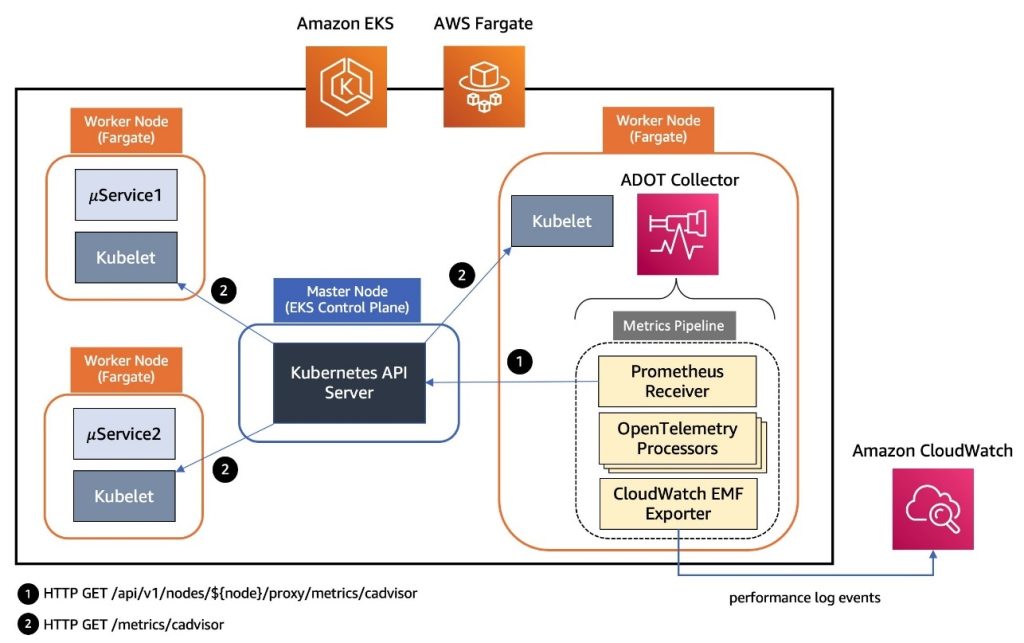AWS Architecture Blog
Category: Developer Tools
Implement monitoring for Amazon EKS with managed services
In this post, we show you how to implement comprehensive monitoring for Amazon Elastic Kubernetes Service (Amazon EKS) workloads using AWS managed services. This solution demonstrates building an EKS platform that combines flexible compute options with enterprise-grade observability using AWS native services and OpenTelemetry.
Improving platform resilience at Cash App
Cash App, a leading peer-to-peer payments and digital wallet service from Block, Inc., has implemented resilience improvements across the entire technology stack. In this post, we discuss how Cash App improved the resilience of its compute platform built on Amazon Elastic Kubernetes Service (Amazon EKS) by implementing a dual-cluster topology to reduce single points of failure. We also discuss how Cash App used AWS Fault Injection Service (AWS FIS) to conduct an Availability Zone power interruption scenario in non-production environments, preparing the platform team for real-world failures and ongoing
Top Architecture Blog Posts of 2024
Well, it’s been another historic year! We’ve watched in awe as the use of real-world generative AI has changed the tech landscape, and while we at the Architecture Blog happily participated, we also made every effort to stay true to our channel’s original scope, and your readership this last year has proven that decision was […]
Let’s Architect! Open-source technologies on AWS
We brought you a Let’s Architect! blog post about open-source on AWS that covered some technologies with development led by AWS/Amazon, as well as well-known solutions available on managed AWS services. Today, we’re following the same approach to share more insights about the process itself for developing open-source. That’s why the first topic we discuss […]
Optimizing fleet utilization with Amazon Location Service and HERE Technologies
The fleet management market is expected to grow at a Compound Annual Growth Rate (CAGR) of 15.5 percent—from 25.5 billion US dollars in 2022 to USD 52.4 billion in 2027. Optimizing how your organization uses its vehicle fleet is important for logistics and service providers such as last mile, middle mile, and field services. In […]
How Launchmetrics improves fashion brands performance using Amazon EC2 Spot Instances
Launchmetrics offers its Brand Performance Cloud tools and intelligence to help fashion, luxury, and beauty retail executives optimize their global strategy. Launchmetrics initially operated their whole infrastructure on-premises; however, they wanted to scale their data ingestion while simultaneously providing improved and faster insights for their clients. These business needs led them to build their architecture […]
A multi-dimensional approach helps you proactively prepare for failures, Part 3: Operations and process resiliency
In Part 1 and Part 2 of this series, we discussed how to build application layer and infrastructure layer resiliency. In Part 3, we explore how to develop resilient applications, and the need to test and break our operational processes and run books. Processes are needed to capture baseline metrics and boundary conditions. Detecting deviations […]
Accelerate deployments on AWS with effective governance
Amazon Web Services (AWS) users ask how to accelerate their teams’ deployments on AWS while maintaining compliance with security controls. In this blog post, we describe common governance models introduced in mature organizations to manage their teams’ AWS deployments. These models are best used to increase the maturity of your cloud infrastructure deployments. Governance models […]
How Munich Re Automation Solutions Ltd built a digital insurance platform on AWS
Underwriting for life insurance can be quite manual and often time-intensive with lots of re-keying by advisers before underwriting decisions can be made and policies finally issued. In the digital age, people purchasing life insurance want self-service interactions with their prospective insurer. People want speed of transaction with time to cover reduced from days to […]
Implementing the AWS Well-Architected Custom Lens lifecycle in your organization
In this blog post, we present a lifecycle that helps you build, validate, and improve your own AWS Well-Architected Custom Lens, in order to roll it out across your whole organization. The AWS Well-Architected Custom Lens is a new feature of the AWS Well-Architected Tool that lets you bring your own best practices to complement the existing […]









